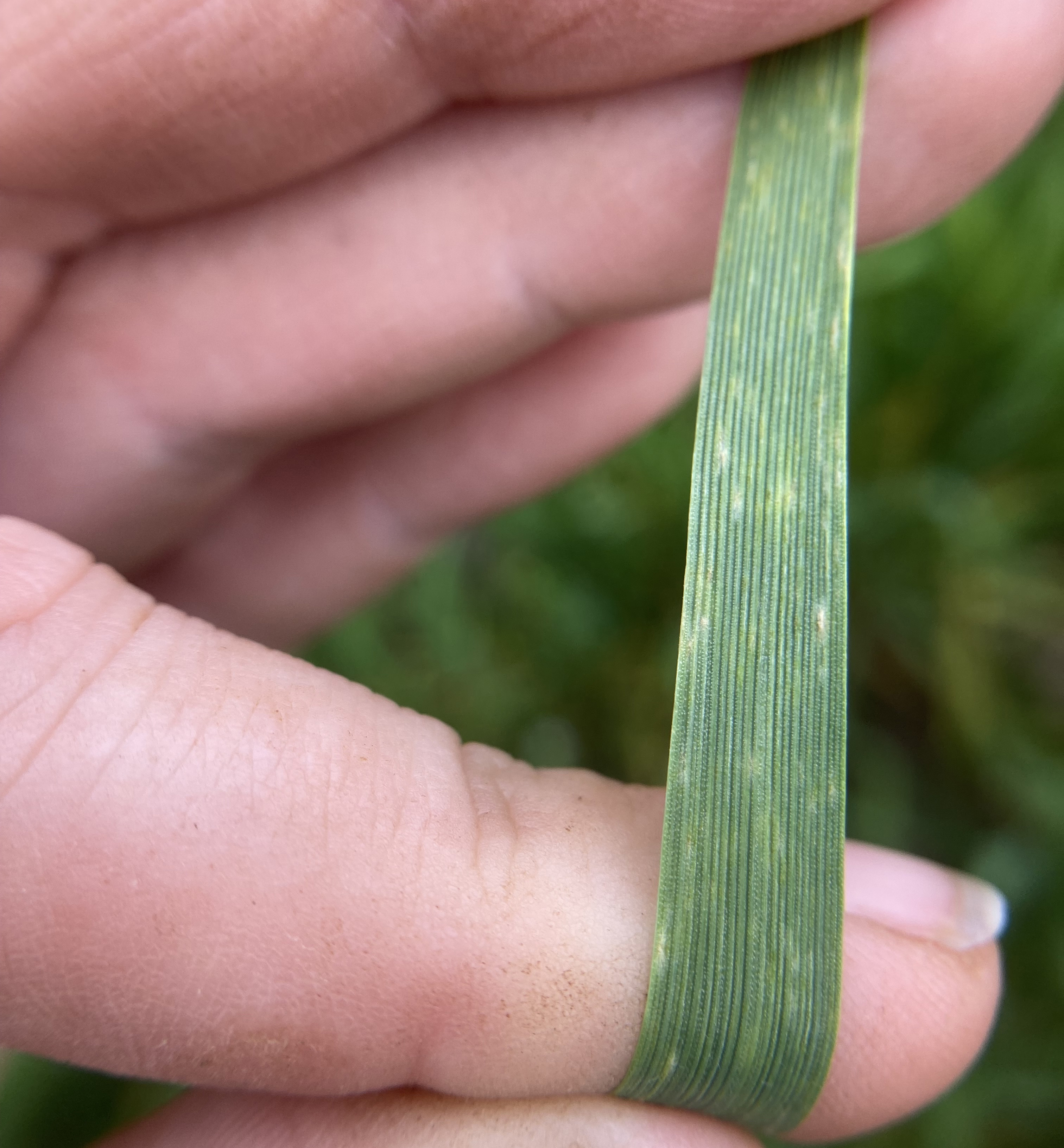Southwest Michigan field crops update – April 24, 2025
Thanks to a stretch of dry weather, this week was good for field work. Alfalfa weevil is present in alfalfa, but wait and follow established scouting and threshold information before treating.

Weather
Sunny, warm, and mostly dry weather this past week resulted in several days suitable for fieldwork. This will continue through today (April 24) and into part of tomorrow until a chance of rain potentially brings precipitation and slightly cooler temperatures. Showers and potential storms are also expected for early next week. Otherwise, the weather is expected to be mildly warm and dry.


Crops and pests
A stretch of dry weather resulted in many field activities, including some soybean and corn planting, tillage and spreading of fertilizer, lime and manure. As a reminder, peak flight and egglaying for seedcorn maggot occurred late last week based on the Constantine Enviroweather station data. Soybeans and corn that were planted into decaying and tilled residues during this time are at high risk of seedcorn maggot damage.
Bucket traps in Berrien (near Berrien Springs), St. Joseph (Centreville) and Van Buren (Lawrence) counties have caught the following:
True armyworm
|
Date |
Berrien |
St. Joseph |
Van Buren |
|
4/14 |
0 |
0 |
2 |
|
4/21 |
0 |
6 |
0 |
Black cutworm
|
Date |
Berrien |
St. Joseph |
Van Buren |
|
4/14 |
0 |
0 |
0 |
|
4/21 |
7 |
15 |
0 |
Winter wheat really took off this past week thanks to the warm and sunny weather. It is at Feekes 5 for the most part, although some fields have a few stems starting to joint, and Feekes 6 is not far behind. Powdery mildew was present last week and has continued to creep up the plant in some cases. If powdery mildew is present in your field, consider adding a fungicide to a post-emergence herbicide pass if you haven’t already made it.

Potato planting progressed significantly over the past week.
Alfalfa and forages have also responded to the warmer weather by increasing in height, and more insects are present in fields. Alfalfa weevil larvae and damage may be present. Because there are many natural insect predators in alfalfa such as the nabid or damsel bug shown below, avoid applications to treat for alfalfa weevil until the larvae and damage meet the following thresholds taken from “Weevils are popping in alfalfa fields.” At an alfalfa height of about 6 inches, if there are alfalfa weevil larvae in sweeps (the larvae will be very small right now), 25% or more stem tips have feeding damage, and there is an average of less than one larva per stem, scout again in seven days. At about 9 inches tall, if there are larvae in sweeps, 50% or more stem tips have feeding damage and there is an average of one larva per stem, an insecticide application is recommended to manage alfalfa weevil.
If you are in southwest Michigan and feel uncertain about the time or procedure for scouting alfalfa weevil, contact Nicolle Ritchie at 269-858-8739 or ritchi67@msu.edu for in-field help rather than spraying too early or unnecessarily.


Irrigation update and crop water use
With planting underway, next week’s rainfall across southwest Michigan can provide benefits and ensure good soil moisture for uniform germination and emergence. When early-season irrigation isn’t necessary, applying water too soon can lead to soil crusting and affect emergence, especially depending on soil type and crop residue cover.
If you're unsure about current moisture conditions, it's always a good practice to check soil moisture before deciding whether early-season irrigation is necessary for crop establishment or herbicide activation. The U.S. Department of Agriculture provides a helpful guide, “Estimating Soil Moisture by Feel and Appearance,” that describes a simple hand-feel method for assessing soil moisture in the field.
Keep in mind that newly emerged corn and soybeans use less than 0.5 inches of water per week during early growth stages. However, winter annual crops like wheat and rye will soon start depleting water from deeper in the soil profile up to 2-3 feet and will be more dependent on timely rainfall or irrigation to avoid stress.
Field Crops Virtual Breakfast Series

Herbicide resistance – waterhemp focus, presented by Erin Hill, was the topic for the MSU Extension Field Crops Virtual Breakfast this week. An important part of managing waterhemp is knowing how to identify it. Waterhemp populations in Michigan are resistant to many herbicides, and resistance to 2,4-D is a new watch-out.
Recordings of this and all the Virtual Breakfast meetings are closed-captioned and available at the Field Crops Virtual Breakfast webpage and the MSU Extension Field Crops Team social media platforms: Facebook, Spotify, YouTube, Apple Podcasts and Twitter/X.
This work is supported by the Crop Protection and Pest Management Program [grant no 2024-70006-43569] from the USDA National Institute of Food and Agriculture. Any opinions, findings, conclusions, or recommendations expressed in this publication are those of the author(s) and do not necessarily reflect the view of the U.S. Department of Agriculture.



 Print
Print Email
Email